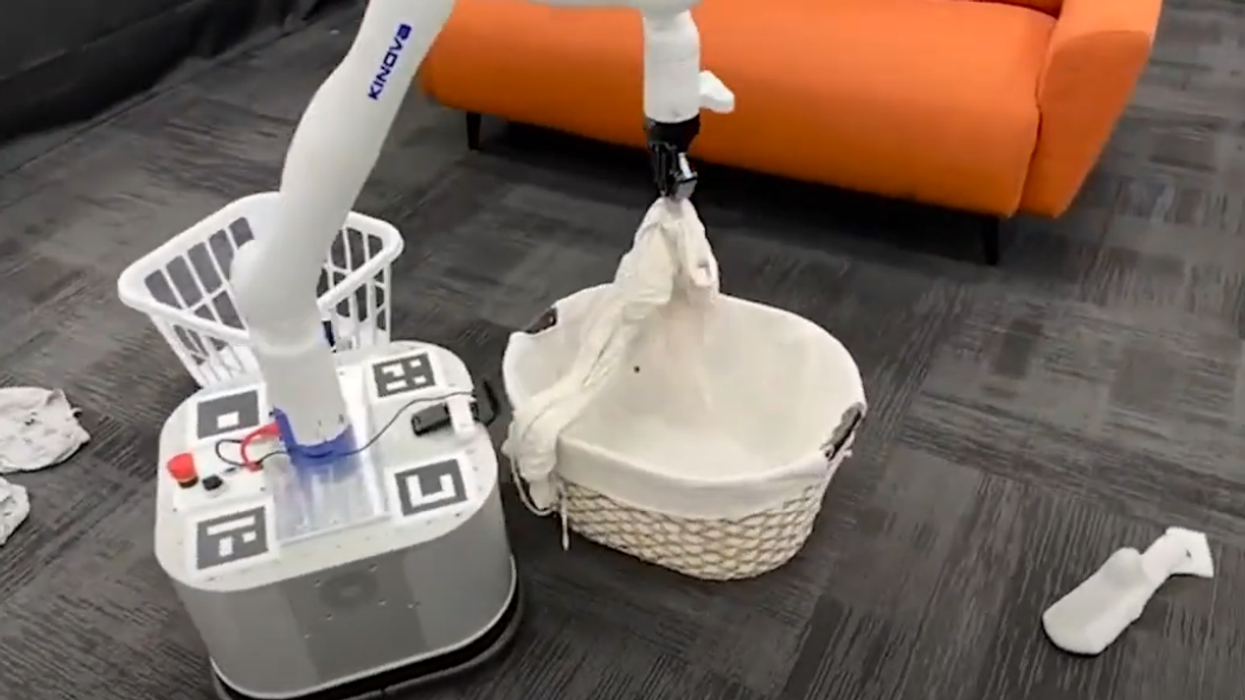
Image via SWNS / YouTube (screenshot)

A group of scientists and robotics engineers at Princeton University have developed a robot that can learn an individual's cleaning habits and techniques to properly organize their living space and throw out waste.
The "Tidybot" was developed by Princeton, Stanford, and Columbia University representatives, along with help from Google and the Nueva School, to make household cleanup automated.
"When organizing a home, everyone has unique preferences for where things go. How can household robots learn your preferences from just a few examples?" said Jimmy Wu, a computer science Ph.D. student and one of the Princeton engineers.
\u201cWhen organizing a home, everyone has unique preferences for where things go. How can household robots learn your preferences from just a few examples?\n\nIntroducing \ud835\udde7\ud835\uddf6\ud835\uddf1\ud835\ude06\ud835\uddd5\ud835\uddfc\ud835\ude01: Personalized Robot Assistance with Large Language Models\n\nProject page: https://t.co/LbVGq01QMT\u201d— Jimmy Wu (@Jimmy Wu) 1683890504
The robot works by having users input (in text) a small number of sample preferences instructing the robot as to where items should be placed. For example, "yellow shirts go in the drawer, dark purple shirts go in the closet," the product's abstract described.
This allows the robot to summarize the "large language models" and generalize the information to apply to other items it may come across. Therefore, it may summarize that "light-colored clothes go in the drawer and dark-colored clothes go in the closet."
The robot is able to identify the objects and receptacles through image classifiers, meaning it can recognize what a shirt or a recycling bin looks like. "The robot will then carry out the cleanup task by repeatedly picking up objects, identifying them, and moving them to their target receptacles," the document stated.
The engineering team said that their approach achieved a 91.2% accuracy rating on unseen objects in their scenarios. In real-world applications, the robot reportedly correctly puts away 85% of objects.
The robot also could differentiate between whether the user wants items to be picked up and placed or the user is okay with the item being picked up and tossed into a receptacle. The machine could also infer where objects are to be placed.
Team member Shuran Song, an assistant professor in computer science at Columbia University, perhaps alluded to further applications for the robots when she retweeted a video of similar machines folding clothes.
\u201cCloth Funnels: Canonicalized-Alignment for Multi-Purpose Garment Manipulation\nabs: https://t.co/w8vEt9MsPX \nproject page: https://t.co/mECxiMHgXl\u201d— AK (@AK) 1666145673
The Tidybot is also capable of placing items in drawers, which is where folding capabilities could have a part to play in future iterations.
The engineers also stated that these robotics could have larger applications in manufacturing settings, such as warehouse organization.
Like Blaze News? Bypass the censors, sign up for our newsletters, and get stories like this direct to your inbox. Sign up here!
Andrew Chapados